
A new global survey quizzed construction executives about their AI plans, actions and perceptions. The results suggest the “AI revolution” is some way off.
In February 2021, two US economists placed a $400 bet on what impact AI would have on the country’s productivity growth in the coming decade.
Stanford University professor Erik Brynjolfsson was the optimist, predicting that, thanks to AI, private, non-farm business productivity growth would average more than 1.8% a year from the first quarter of 2020 to the last quarter of 2029.
That’s faster than what the US Congressional Budget Office predicted at the time – 1.5% from 2021-25 and 1.4% from 2026-31.
He says AI is “a general-purpose technology that is affecting almost every industry while accelerating the pace of discovery”. It might take years to show up in official stats, especially as companies adapt, but it will happen, he maintains.
Challenging him is Northwestern University professor Robert J Gordon, who doubts AI will end up even beating the productivity gains brought by the digital revolution of 1995-2005.
Likening AI to call centre technology, he concludes: “Much economic activity, from home construction to slicing deli meats at the local supermarket, remains immune from a radical AI transformation.”
Nearly three years on from the launch of ChatGPT, data centres are mushrooming, AI capital expenditure is hoovering up most available investment, and claims that AI is on the verge of revolutionising construction are two-a-penny.
But what do construction firms think – and I mean really think – about AI?
View from the C-Suite
Last week saw the release of a global survey of 86 senior construction people quizzing them about their AI plans, actions and perceptions.
Nearly two-thirds of respondents (62%) were chief executives, executive board directors, chief technology or digital officers, and other director- and manager-level people from across the sector.
The companies they lead were mostly architectural and engineering design consultants (27%), contractors or subcontractors (20%), project or cost consultants (14%), other construction consultants (14%), technology providers (8%), and a smattering of owners, developers, and financiers.
The bulk of respondents were in the UK (47%), the US (14%), and Australia (9%) but responses also came from China, India, Canada, Japan, European countries, and others.
What are people up to now?
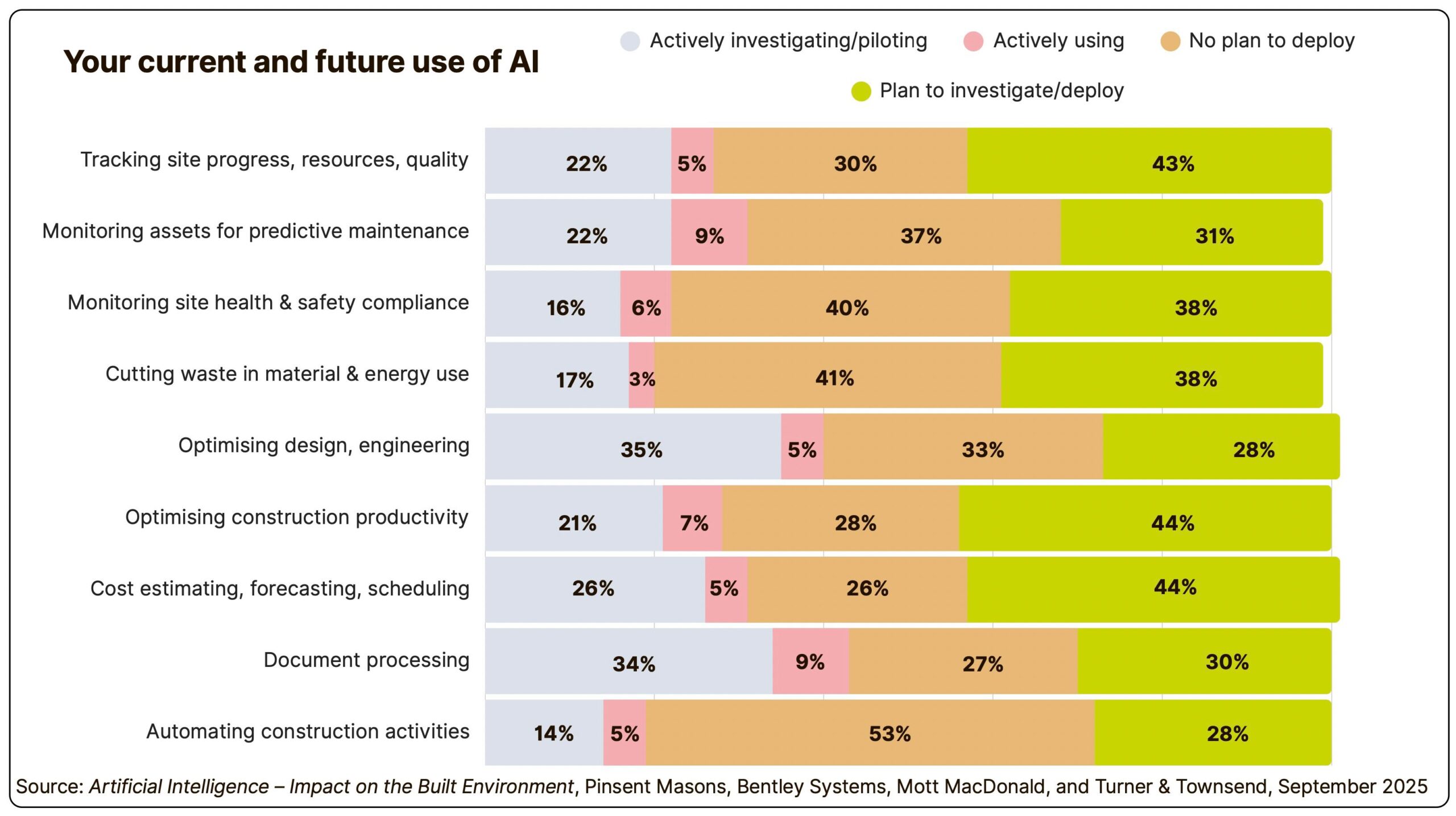
This rich snapshot of what’s going rewards study. I have four observations.
First, if you haven’t retooled your company for the AI revolution yet, you’re not alone.
Second, the first and last questions are a bit on the permissive side, providing plenty of rope ladders for respondents to come aboard.
To be “actively investigating/piloting” could in theory mean anything from “Jeff was Googling it just this morning” to “we unveil our prototype self-build office tower tomorrow”.
Third, I’m impressed by the doughty “No plan to deploy” cohort. They and the “Plan to investigate/deploy” brigade – also known as Team Mañana – put their foot down when it comes to “automating construction activities” – “construction activities” being what construction is more-or-less about.
In contrast (fourth observation), designers and engineers seem the keenest. They may also be the most concerned.
Do we know what we’re doing?
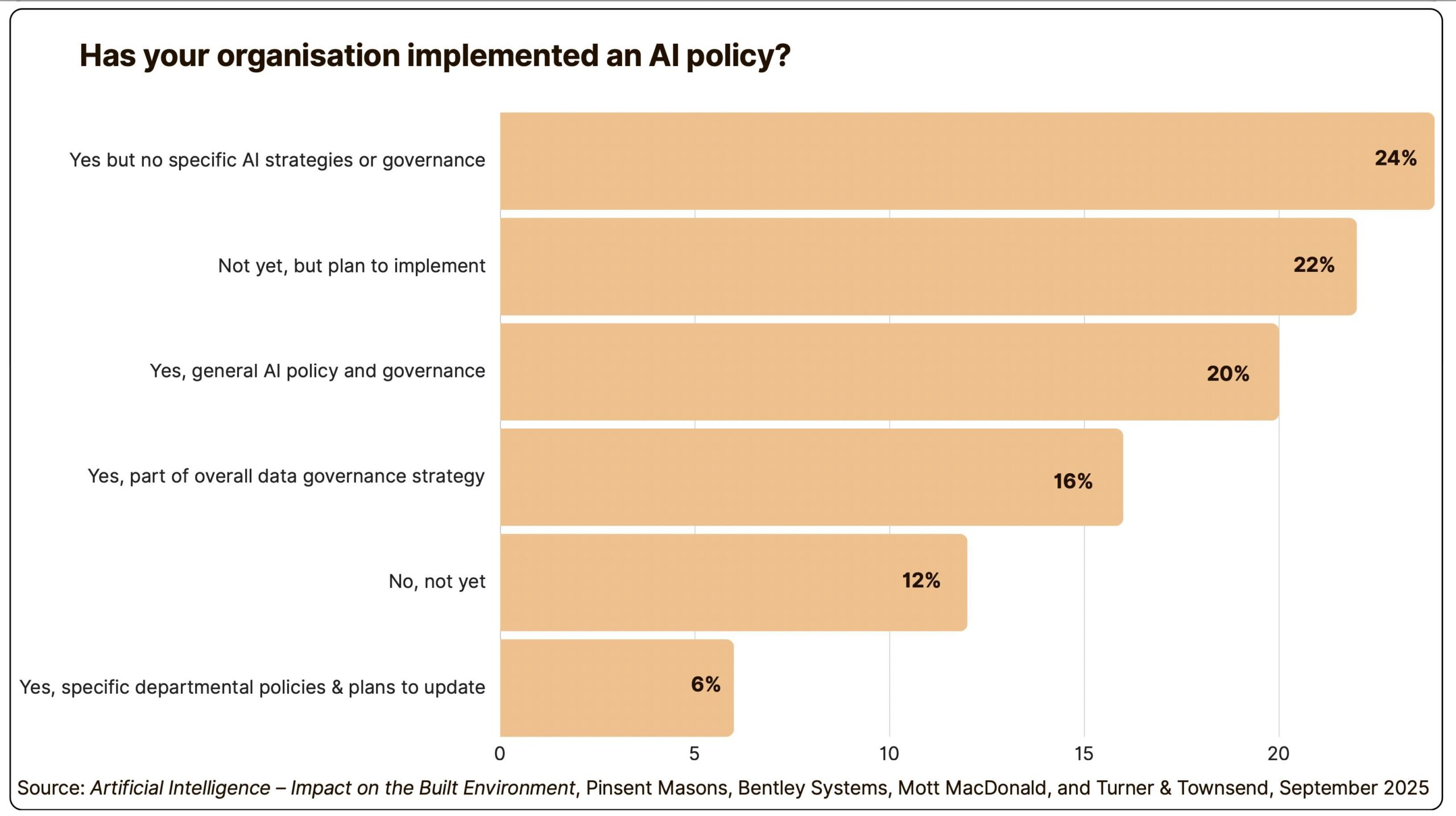
The report arising from the survey warns that AI creates a potential minefield for corporate risk management.
“For example,” it says, “if AI is used for generative design, how can the industry ensure that design meets building codes and safety requirements? Who takes liability for any errors? Who makes sure that the output created by means of AI is owned by the organisation with intellectual property rights available to defend proprietary position against third-party interests?
“Without adequate governance and project controls, AI mistakes could pose safety risks or legal liabilities. AI model validation, peer review of AI-assisted designs, and clear policies and contractual terms about AI use will help ensure that there are appropriate checks and balances. Regulators may also need to update guidelines to cover AI-assisted engineering.”
What should we spend money on first?
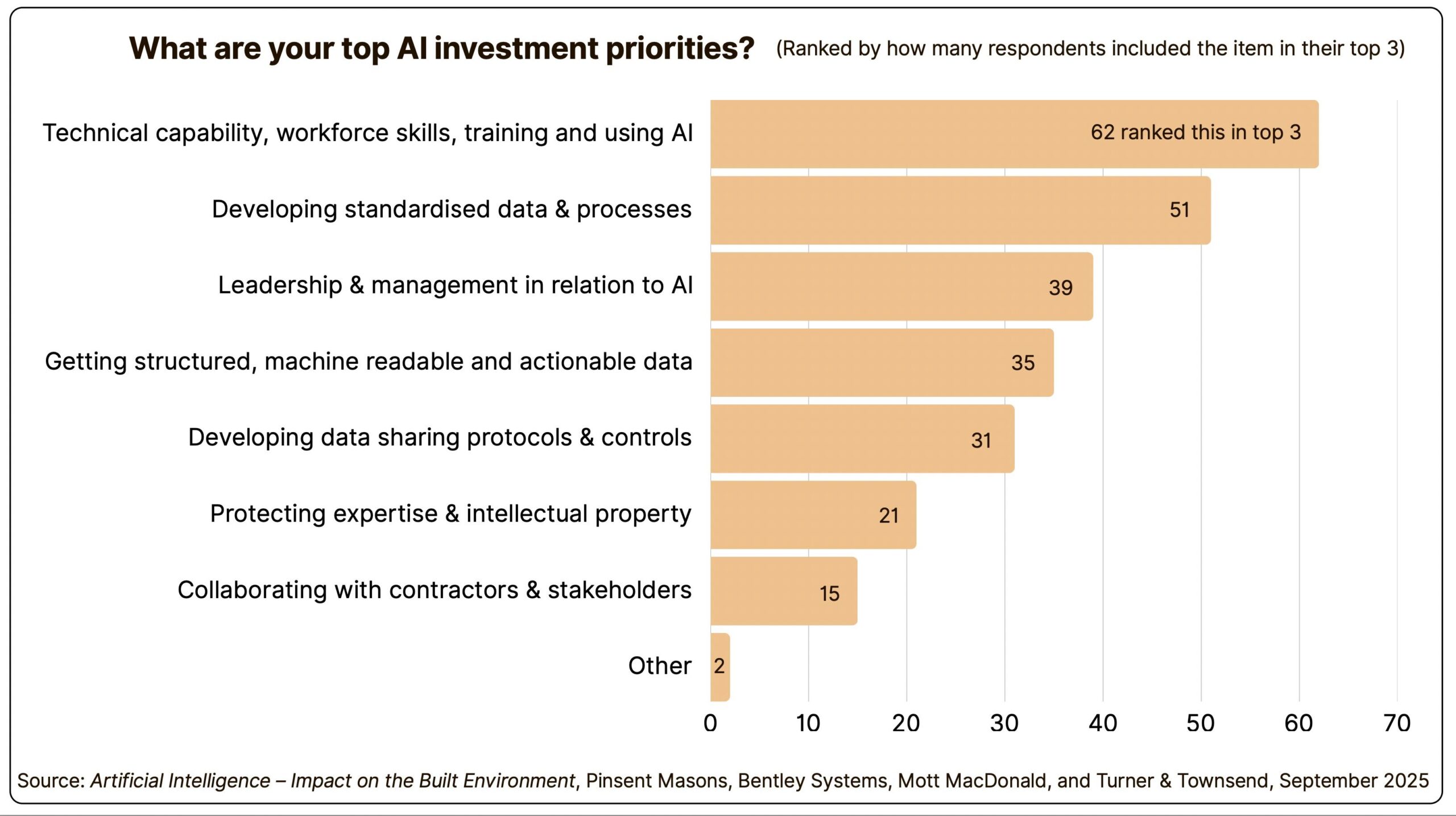
In the next three years, respondents are most concerned with getting their houses in order to receive a reputedly potent but mysterious guest.
They’re preoccupied, too, with getting their data in shape for what this guest might want to do with it. The report sets out why this is important:
“This extends to attributes describing elements such as hinges, intumescent strips, door furniture, level of fire resistance, door frame, and many other elements.
“This level of complexity is fine, but when manufacturers, designers, contractors, and facilities managers are unable to standardise on the attributes and make the data on such products machine-readable, then using AI becomes more problematic and potentially more unreliable.”
Where do we anticipate difficulties?
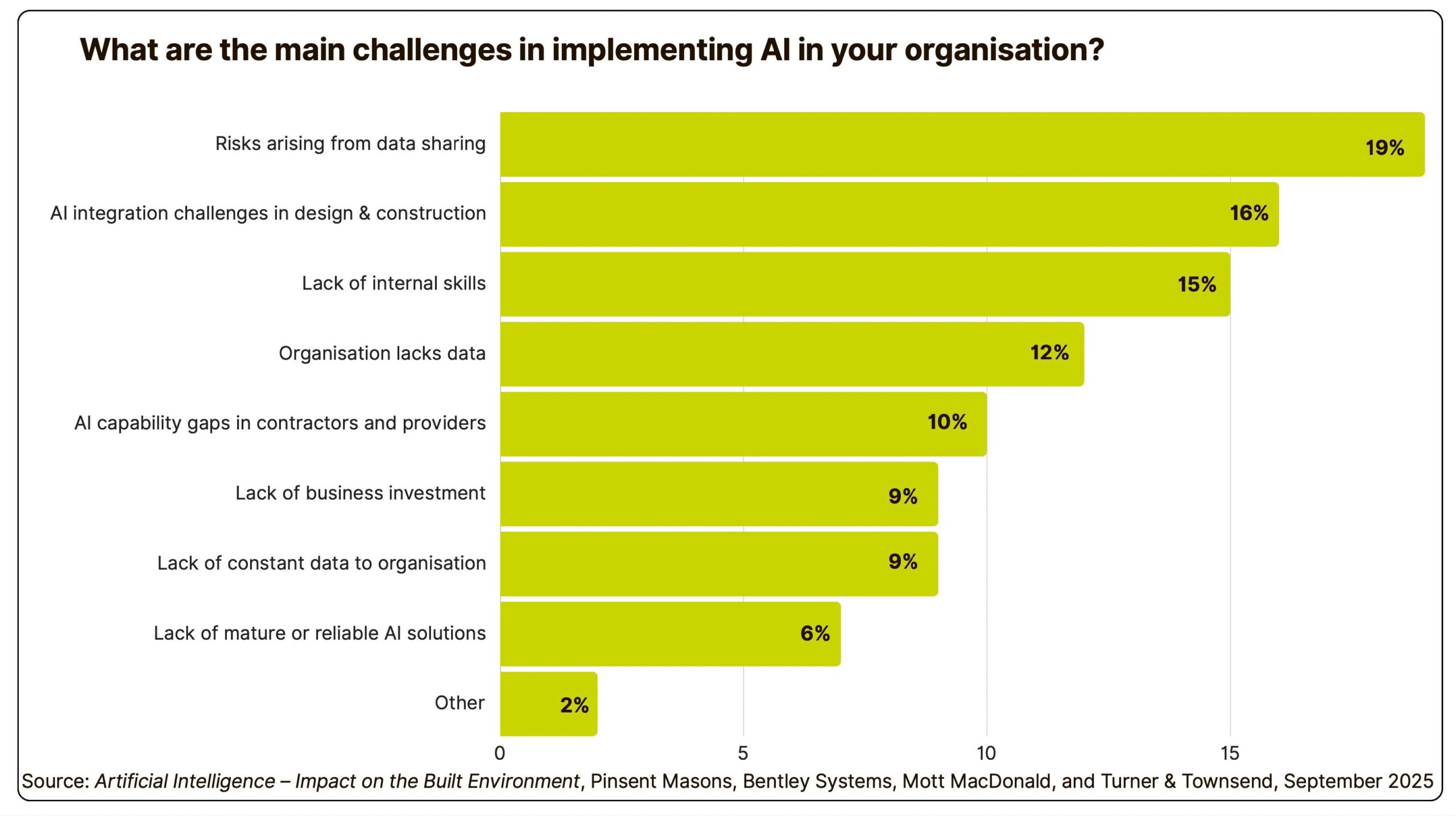
The biggest concern here is risks arising from data sharing.
“This not only leads to commercial risks for individual organisations,” the report says, “but also potentially opens organisations to regulatory risks and potential penalties in different jurisdictions. For those organisations operating across multiple jurisdictions (many organisations in the sector operate across as many as 120 countries or more) these risks remain heightened.”
It adds that the minutely fragmented nature of the industry complicates things even further. The potential solution is sensible but, at this stage, remote:
“A potential solution for data sharing risks is to implement data sharing agreements or trusts which enable organisations to safely share data and intellectual property (IP) and where access to data and IP can be appropriately controlled across fragmented supply-chains that operate across multiple jurisdictions.”
Will we do the same things as before?
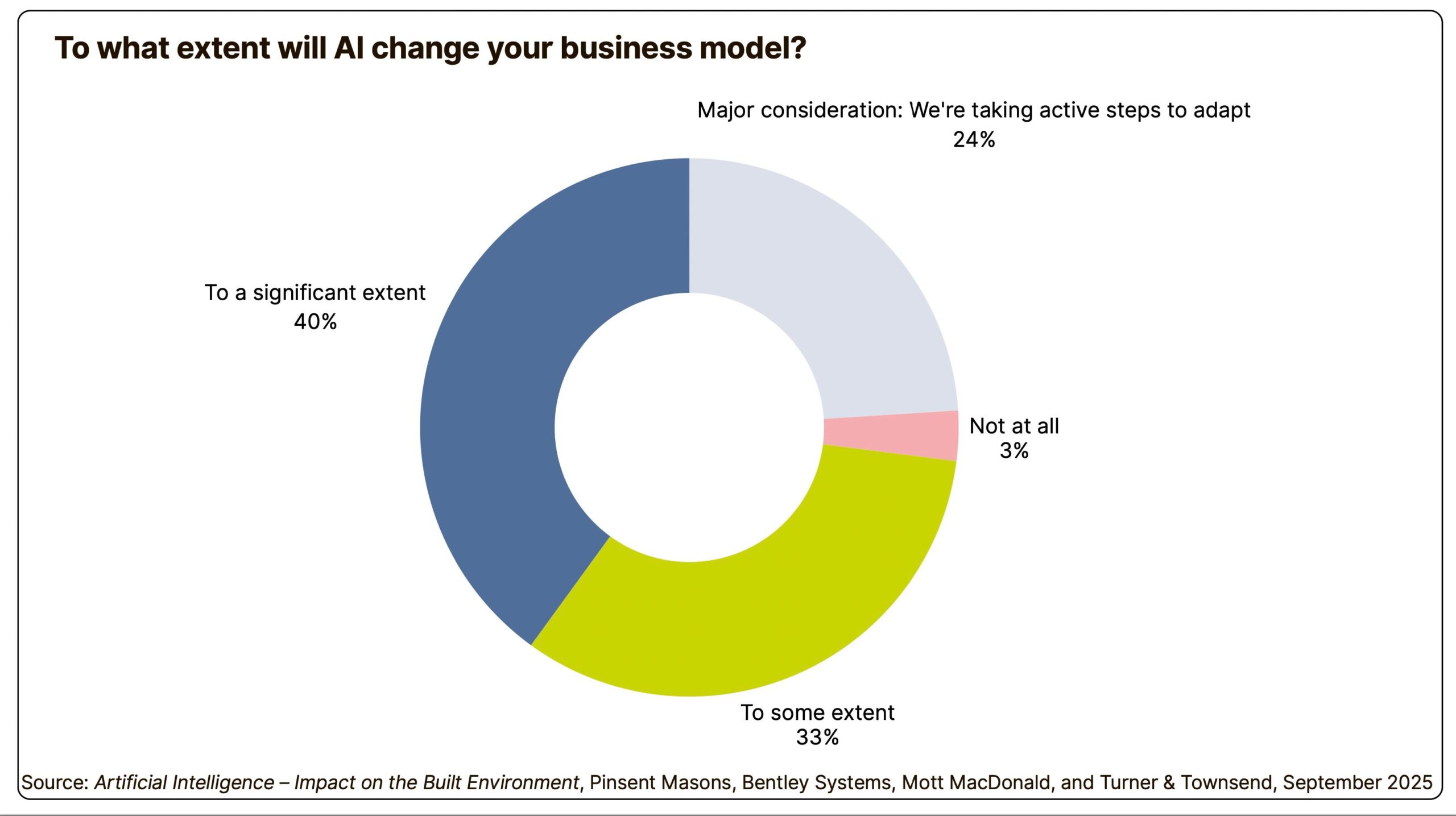
Nearly quarter of respondents believe AI definitely will change their business model, and say they’re acting now to adapt.
Equally certain are the refusenik 3%.
Less so are the 73% of “Some-extenters” and “Significant-extenters”, because both “some” and “significant” can conceal a host of doubts, caveats and reservations.
Is the revolution here yet?
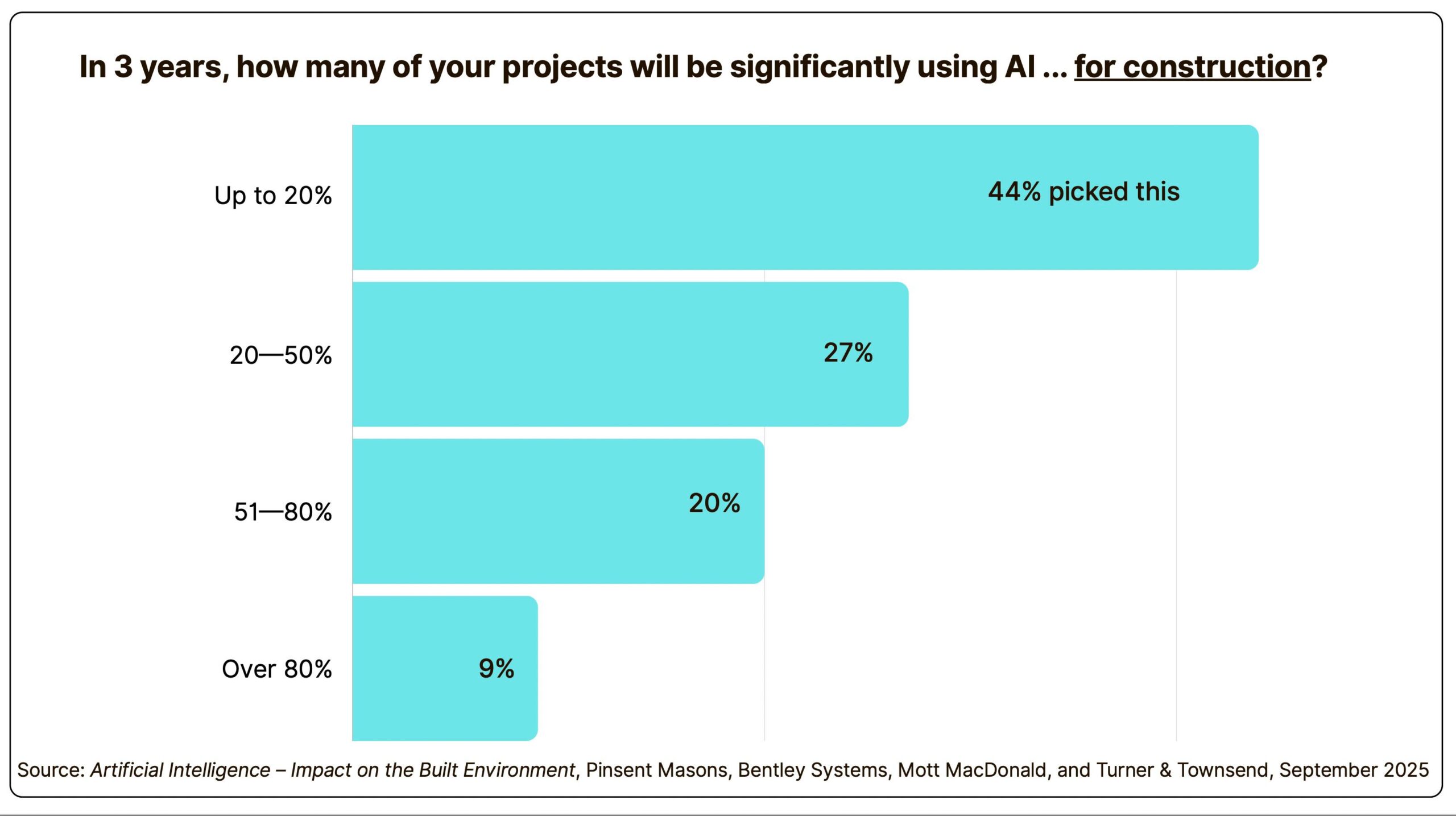
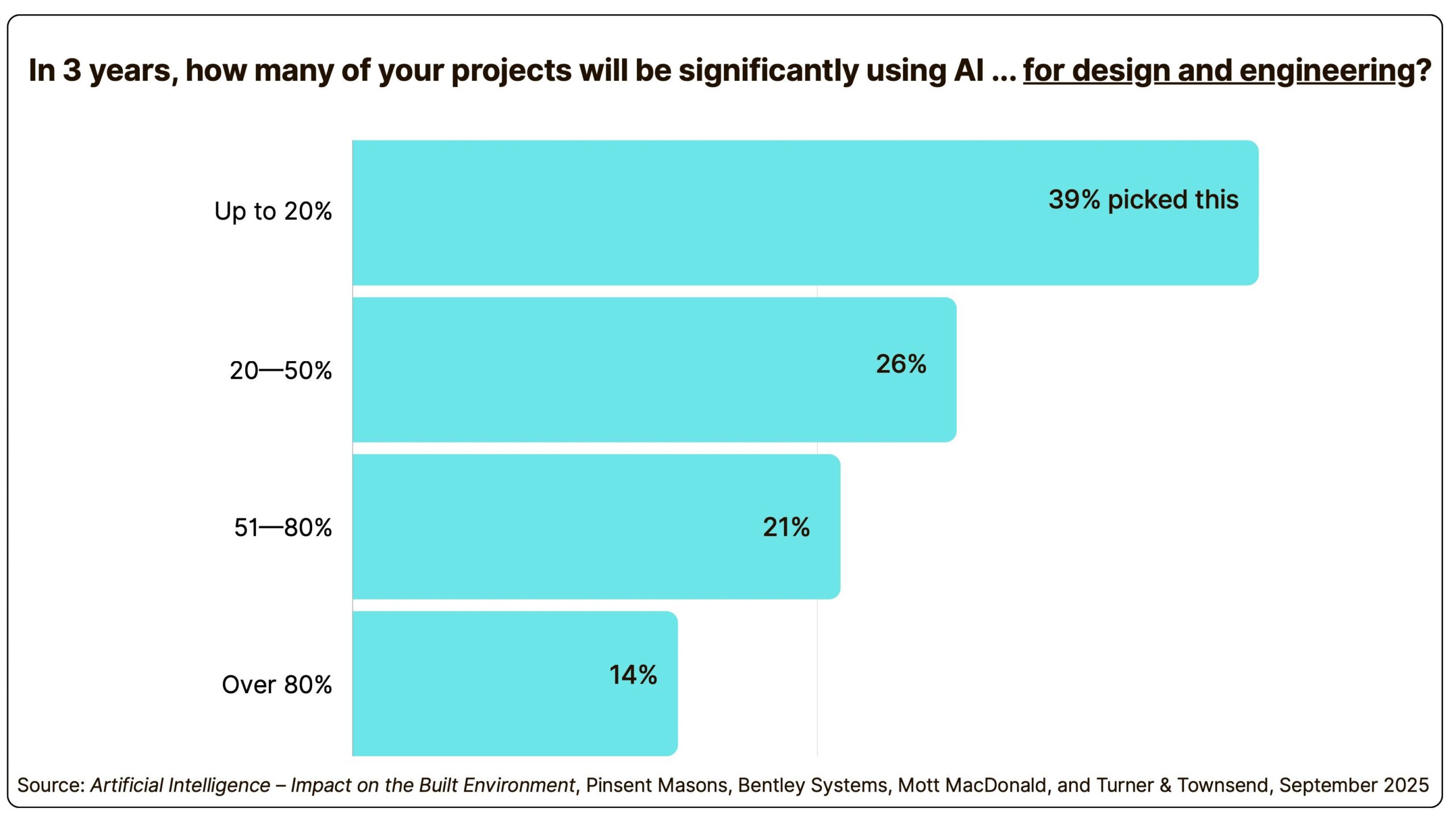
If the revolution is here, these two slides suggest contractors, designers and engineers don’t see it yet.
Asked how many of their projects would be using AI in three years, most picked the smallest quantity on the menu – “Up to 20%” – a range that includes 0%.
However, the responses suggest that designers and engineers can imagine a slightly greater role for AI than contractors can.
About that bet …
As of today, we’re 2,107 days into the 3,652-day period covered by the professors’ wager – about 58% of the way through – so we’ll have to wait and see which one wins.
When it comes to construction, as someone who’s been reporting on it long enough to see all manner of rethinking, improving, and transforming fads and crazes go splat against the unvarnished realities of the industry, I’m a bit skeptical.
As a contractor at the survey’s London launch remarked to a table of engineers, designers, consultants, and academics, and I paraphrase: “With contractors’ margins being what they are, we might just let you folks be the bleeding edge on this.”
- Subscribe here to get stories about construction around the world in your inbox three times a week






